With spring comes a rash of fertility festivals, designed to further the success of the year’s crops. These have ancient origins and go back to a time when the very existence of villagers depended on the success of the harvest. In a country of unpredictable weather and constant disasters, beseeching the help of the kami was a matter of vital importance.
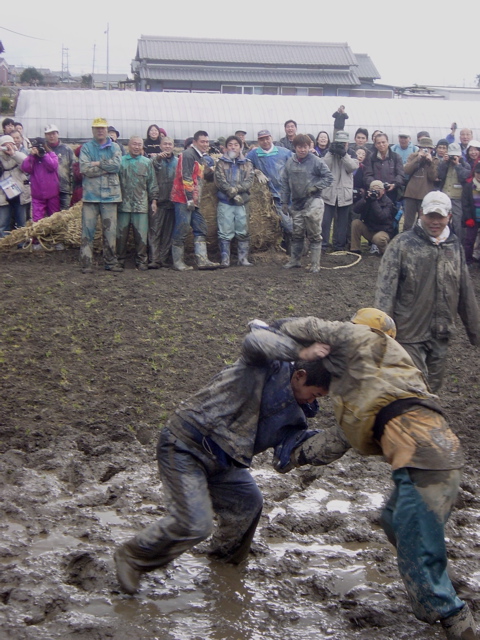
With the Meiji Restoration of 1868, many of the old fertility practices were banned or frowned upon. Still today there are Japanese who shun or are ashamed of them, particularly among the urban sophisticated who look down on such ‘primitive’ lewd customs of the past. Those in the countryside though have no such inhibitions and are more in touch with the raw essence of life. It is here that one can find age-old rites still being carried out in the manner of their ancestors.
One such festival happens every year on Feb. 11 in the Yamato basin near Omiwa Jingu, when two neighbouring shrines hold a joint festival. The male kami of one shrine is symbolically coupled with the female kami of the other by the use of phallic and vaginal shaped rice ropes.
Before the coupling, the kami are entertained, as you can see on the right, by sumo wrestling in the as yet unplanted rice paddies. It’s a muddy affair!
Following this the female symbol is dragged from the neighboring field, borne on the backs of several stalwart men. It has a long tail and the weight makes it difficult to manoeuvre, but eventually it is brought to where the male lies waiting. In the picture below you can see it being raised up into the air between the branches of adjoining trees.
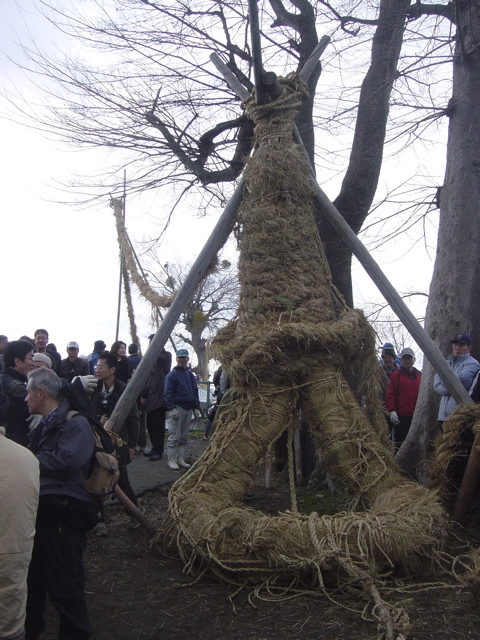
The next stage of the operation involves hauling across the giant phallus, which as you can see from the strained faces of the villagers in the picture below requires a great deal of effort.
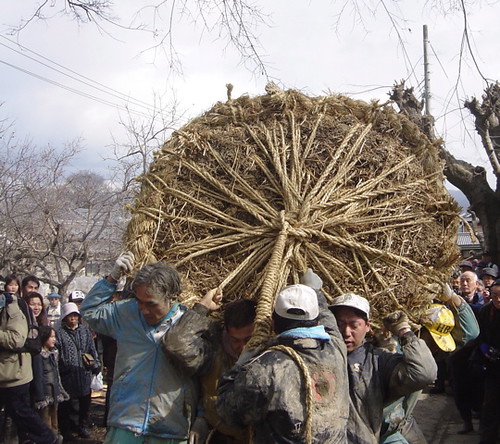
Following the arrival of the giant phallus comes the climax of the proceedings, when it is inserted into the female (see below). Once it is in position, it has to be secured by winding the rice rope attached to it around and around the two objects, which is why one of the smaller villagers in the picture below has to climb on top. The whole operation takes quite some time and no little skill, with lots of shouting, instructions and good humour.
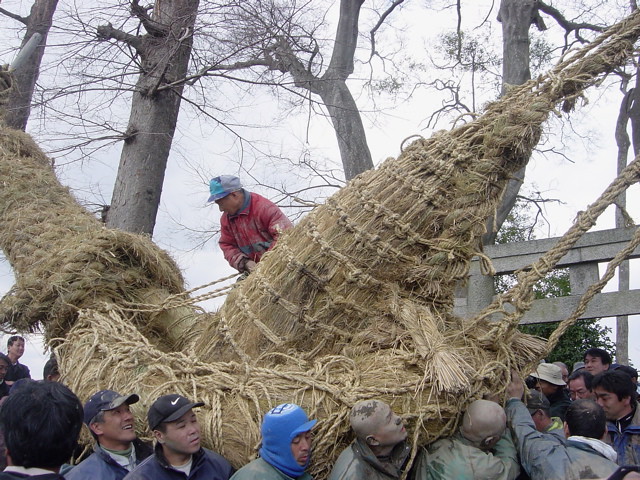
The closing rite of the festival takes place at the village shrine in honour of the presiding kami, Susanoo no mikoto. Given his wild nature and outrageous behaviour in the mythology, he makes a suitable patron for the Pan-like shenanigans done in his name. Hopefully he will see fit to provide a good harvest for this year also!

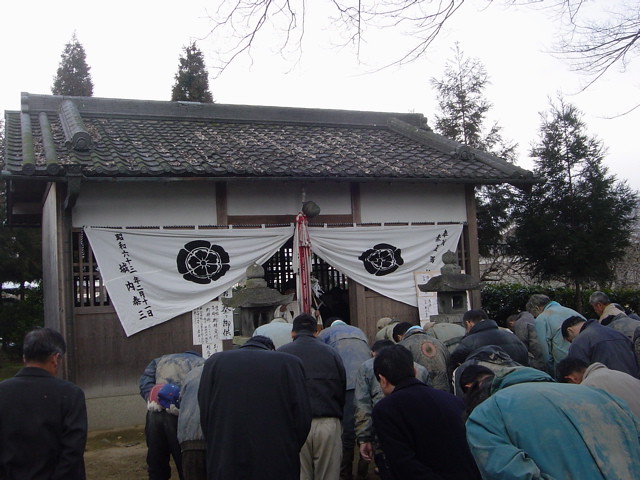
Thanks for this interesting story.
I added a link to the Honen Matsuri.
Gabi from Okayama